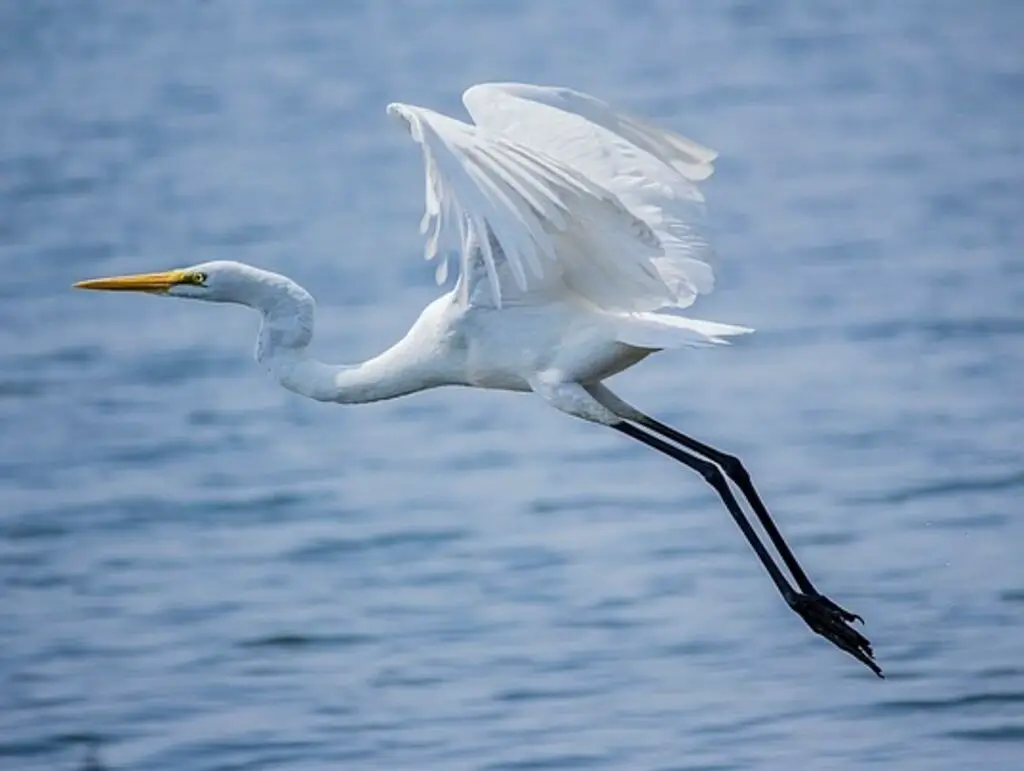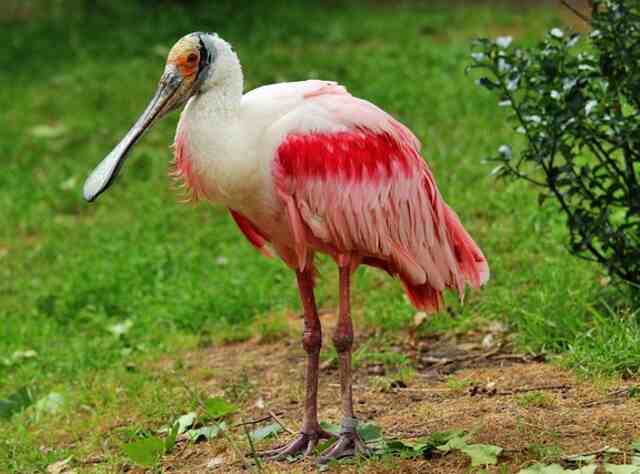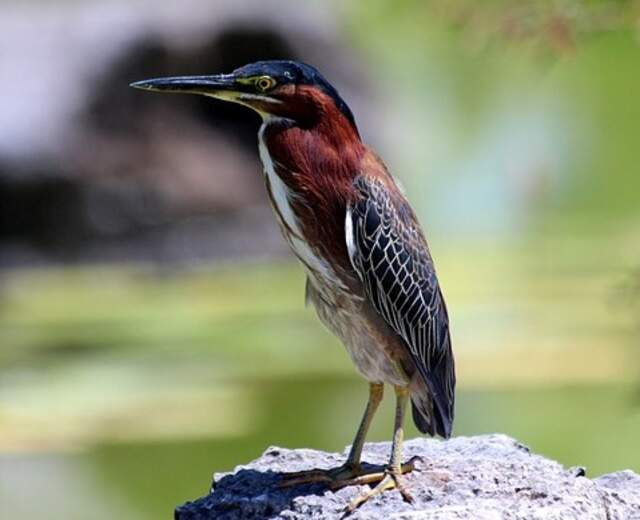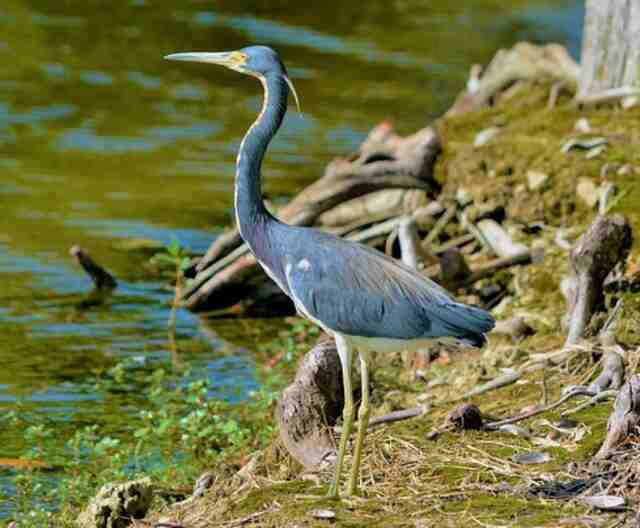Looking to expand your knowledge of birds that resemble egrets in appearance? Look no further than this blog post, where we introduce you to 11 stunning bird species.
These birds may not be as well-known as egrets, but they share similar features, from their long legs and necks to their colorful feathers. Join us as we discover these 11 fascinating birds that look like egrets.
Great Egret
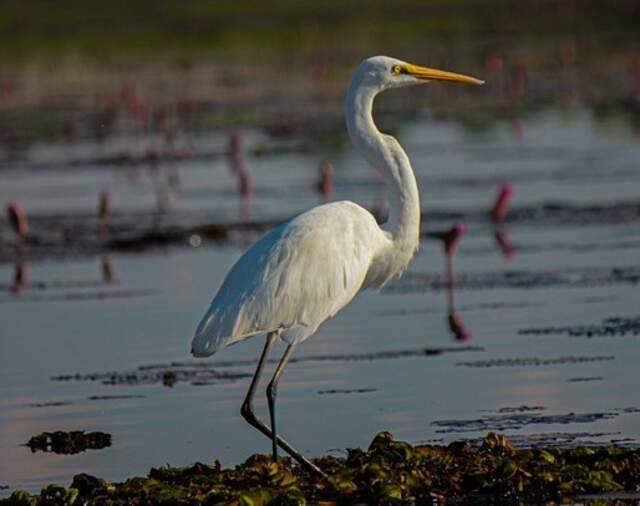
- Length: 37.0-40.9 in (94-104 cm)
- Weight: 35.3 oz (1000 g)
- Wingspan: 51.6-57.1 in (131-145 cm)
Characteristics
The Great Egret (Ardea alba) is a large, wading bird with a wingspan of up to 1.5 meters and a height of up to 1 meter. It has a long, slender, S-curved neck and a sharp, pointed yellow bill.
Its plumage is predominantly white, with black legs and feet, and long plumes on the back during breeding season. Males and females look similar, but during breeding season, males develop longer plumes and brighter colors.
Distribution Range
The Great Egret is found throughout much of the world, including North and South America, Europe, Asia, Africa, and Australia. In North America, it can be found year-round in the southern United States, while in other regions, it is migratory.
Habitat
The Great Egret can be found in a variety of wetland habitats, including marshes, swamps, ponds, and lakes. It prefers areas with shallow water and plenty of vegetation to hunt from and nest in. It is also known to frequent agricultural fields and other open areas during non-breeding season.
Diet
The Great Egret feeds primarily on fish, but it also consumes amphibians, reptiles, insects, and small mammals. It hunts by standing still or wading slowly through the water, and then striking quickly with its bill to catch prey. It has also been observed using its wings to create shade to attract fish to the surface, making them easier to catch.
Quick Reference Guide
| Bird Name | Size | Coloration | Distribution Range | Habitat | Diet |
|---|---|---|---|---|---|
| White Ibis | 63-81 cm | White | Southeastern U.S. | Marshes, swamps | Insects, small animals |
| Glossy Ibis | 55-65 cm | Dark with iridescence | North, Central & South America | Wetlands | Crustaceans, insects, small fish |
| Wood Stork | 85-115 cm | White with black | Southeastern U.S. | Swamps, wetlands | Fish, insects, crustaceans |
| Roseate Spoonbill | 71-86 cm | Pink | Gulf Coast & Florida | Saltwater marshes | Crustaceans, fish, insects |
| American White Pelican | 130-180 cm | White | North America | Lakes, rivers | Fish, amphibians |
| Black-crowned Night Heron | 58-65 cm | Black, gray | Worldwide | Wetlands, forests | Fish, crustaceans |
| Green Heron | 44-52 cm | Green, brown | North & Central America | Marshes, streams | Fish, amphibians, insects |
| Tricolored Heron | 58-66 cm | Blue-gray | Gulf Coast & Florida | Mangroves, salt marshes | Fish, crustaceans, insects |
| Little Blue Heron | 56-76 cm | Blue-gray | Southeastern U.S. | Wetlands, estuaries | Fish, crustaceans |
| Yellow-crowned Night Heron | 58-65 cm | Yellow, black | Americas, West Indies | Wetlands, forests | Fish, crustaceans |
| Great White Pelican | 140-180 cm | White | Africa, Europe, Asia | Lakes, rivers | Fish, amphibians |
Birds That Look Like Egrets
White Ibis
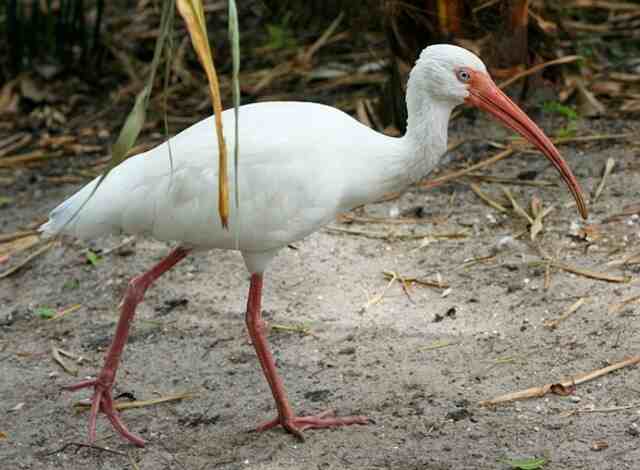
The White Ibis is a long-legged wading bird found in the southeastern United States, Mexico, and Central and South America. It has a distinctive long, curved bill that it uses to probe for food in shallow waters, mud, and sand. The ibis’s white plumage is contrasted with black wingtips, and its legs and bill are bright red. Its diet consists of fish, insects, and small crustaceans. The White Ibis can be found in a variety of habitats, including marshes, swamps, and coastal wetlands.
While both the White Ibis and the egret are wading birds that live in wetland environments, there are several differences between the two. Egrets are generally larger than ibises, and they have a longer, thinner bill. They are typically all white, while the ibis has black wingtips and red legs and bill.
Egrets can be found in a wider range of habitats, including freshwater and saltwater environments, while the ibis is mostly found in freshwater environments. Egrets feed mainly on fish, while ibises have a more diverse diet that includes insects and crustaceans.
Glossy Ibis
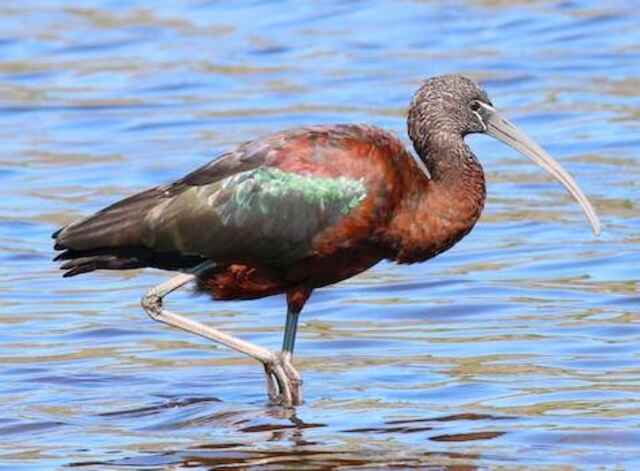
The Glossy Ibis is a stunning wading bird known for its glossy dark plumage and long, curved bill. It inhabits wetlands and marshes across the globe, from Europe and Africa to Australia and the Americas. Its diet consists of a variety of aquatic invertebrates and small fish, which it catches by probing its bill into shallow water.
The egret is another wading bird that shares some similarities with the Glossy Ibis. Both birds inhabit wetlands and feed on similar prey, but the egret has a more varied diet that includes insects and small reptiles. Egrets are typically larger than Glossy Ibis and have a more upright posture, with a white or yellowish plumage and a straight, pointed bill.
They are known for their elegant appearance and graceful movements, while the Glossy Ibis has a more subdued and unassuming presence.
Wood Stork
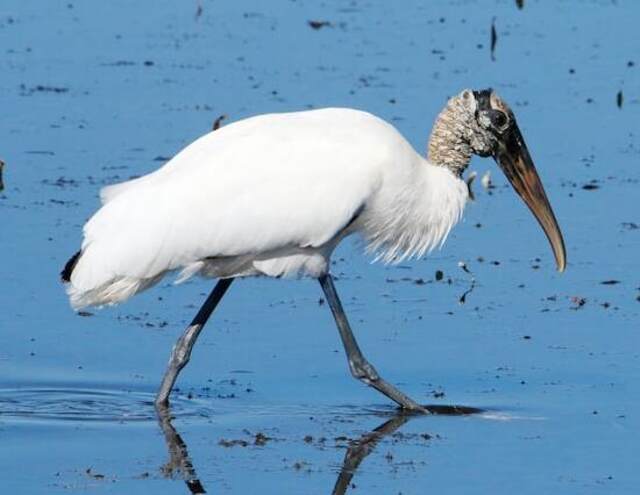
The Wood Stork is a large, white, bald-headed wading bird with a distinctive long, thick, down-curved bill. They can be found in freshwater and saltwater habitats in the southeastern United States, South America, and the Caribbean. They primarily feed on fish, but will also eat amphibians, insects, and crustaceans.
Despite being a protected species, their numbers have declined due to habitat loss and degradation. Egrets and Wood Storks share some similarities, such as their preference for wetland habitats and a diet that includes fish. However, egrets tend to be smaller and more slender, with long, slender bills that are straighter than the Wood Stork’s.
Egrets are often white or gray and may have ornate plumes during the breeding season, while Wood Storks are primarily white with black flight feathers. Additionally, egrets are more active hunters, often seen darting and spearing prey with their bills, while Wood Storks tend to forage by standing still and waiting for prey to swim within reach.
Roseate Spoonbill
The Roseate Spoonbill is a stunning bird with a unique appearance that sets it apart from other species. It has a bright pink plumage, a spoon-shaped bill, and a bald greenish head. Found in the Americas, it prefers to inhabit shallow marshes, mangrove swamps, and coastal lagoons. Its diet consists mainly of fish, crustaceans, and insects, which it scoops up with its bill.
With its vibrant colors and spoon-shaped bill, the Roseate Spoonbill is an unmistakable sight in the wild. Egrets are often confused with Roseate Spoonbills due to their similar appearance. However, egrets have a white plumage and a long, pointed bill, making them distinct from the pink-colored Spoonbill.
Egrets can be found in a wide range of habitats, including wetlands, forests, and grasslands, and they feed on fish, insects, and small mammals. They are generally smaller than Spoonbills, and their coloration can vary depending on the species. Despite these differences, both birds exhibit similar behaviors and can often be found in the same habitat.
American White Pelican
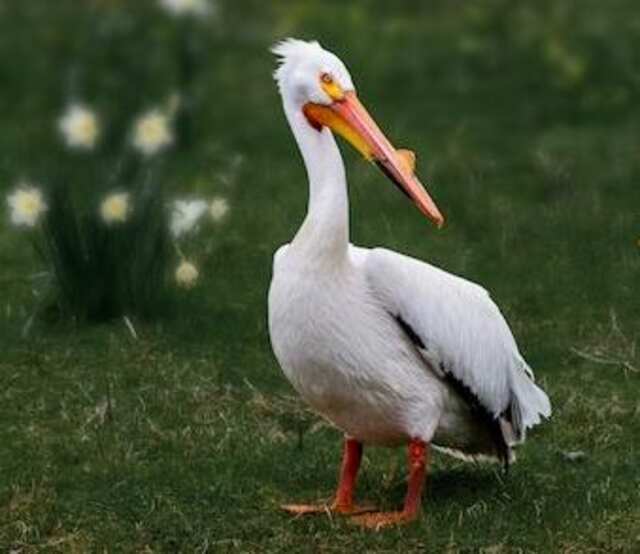
The American White Pelican is a large, majestic bird with a wingspan of up to 9 feet. These pelicans are primarily found in North America, inhabiting freshwater lakes, rivers, and wetlands. They have distinctive white plumage, a large orange bill, and black wingtips.
Their diet consists mainly of fish, which they catch by swimming in groups and scooping up prey with their pouch-like bills. In contrast, the egret is a smaller bird with a more slender build, found in various parts of the world. Egrets inhabit wetlands, ponds, and marshes, feeding on fish, amphibians, and crustaceans.
While both birds have a white coloration, egrets have a longer, thinner neck and a pointed bill, which they use to spear prey. Unlike pelicans, egrets are solitary hunters and do not rely on group fishing tactics. Despite these differences, both species share a preference for watery habitats and have a graceful, majestic appearance.
Black-crowned Night Heron
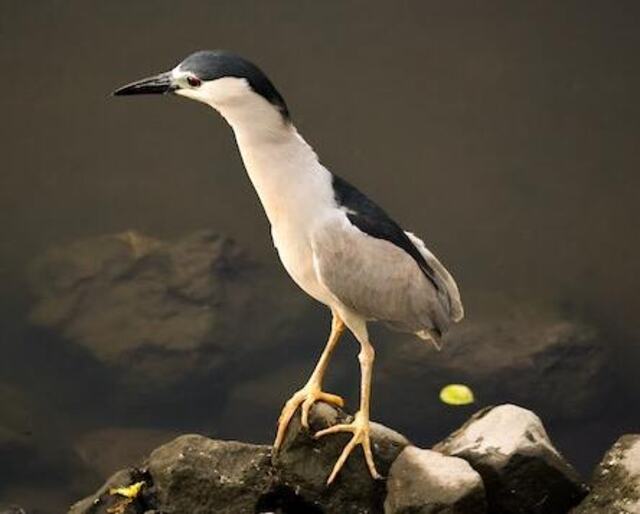
The Black-crowned Night Heron is a medium-sized heron with black cap and back, gray wings, and red eyes. They can be found throughout the Americas, Europe, Africa, and Asia, inhabiting wetlands, marshes, and coastal areas. Their diet consists of fish, crustaceans, insects, and small mammals, which they catch using their sharp bill and stealthy approach.
They are nocturnal birds, roosting during the day and actively hunting at night. In contrast to the Black-crowned Night Heron, the egret is a larger, more slender bird with white plumage and a yellow bill. Egrets can also be found worldwide in wetland habitats, but are more commonly seen in warmer regions.
Their diet consists primarily of fish, but also includes amphibians, reptiles, and small mammals. Egrets are diurnal birds, hunting during the day and roosting at night. Despite their differences in appearance and habits, both the Black-crowned Night Heron and egret share a similar range, habitat, and diet, highlighting their adaptation to wetland ecosystems.
Green Heron
The Green Heron, a small and secretive bird, is known for its striking emerald green back and wings. It has a unique neck shape that allows it to fold down its head and bill when not hunting. Found in wetlands and marshes throughout North and Central America, they primarily feed on fish, crustaceans, and insects. They are solitary and fiercely territorial, often perching on branches or logs near the water’s edge to hunt.
In comparison, the Egret is larger and more conspicuous than the Green Heron, with a bright white plumage and a long, slender bill. Egrets can be found in a variety of wetland habitats, including marshes, swamps, and shorelines, around the world. They feed on a variety of prey, including fish, frogs, and small mammals.
Unlike the solitary Green Heron, Egrets often gather in large flocks during breeding season, and they are known for their elaborate courtship displays. Despite their differences, both birds play vital roles in their respective ecosystems and are cherished by birdwatchers and nature enthusiasts alike.
Tricolored Heron
The Tricolored Heron, a striking wading bird found across the Americas, is known for its blue-gray plumage, long neck, and slender body. This heron species can be found in freshwater and saltwater habitats, including marshes, mangroves, and lagoons.
They feed on small fish, crustaceans, and insects, using their sharp beaks and quick movements to snatch prey from the water or ground. In comparison, the Egret shares similar habitats and diet with the Tricolored Heron but differs in size, appearance, and behavior. Egrets are larger, with white or cream-colored feathers, and a distinctive S-curved necks.
They feed on similar prey as herons but may also consume amphibians and reptiles. While both species are skilled hunters, egrets are known for their slow and deliberate movements, while herons are more active and often seen wading or flying quickly.
Little Blue Heron
The Little Blue Heron, Egretta caerulea, is a small heron with a slate-blue body, a maroon neck, and a slender bill. They can be found throughout most of North and South America, ranging from the eastern United States to Argentina. They prefer freshwater and saltwater marshes, swamps, and tidal flats as their habitat.
Their diet primarily consists of fish, but they also feed on crabs, insects, and other small aquatic animals. In comparison, the Egret has a similar appearance to the Little Blue Heron, but it is larger in size with a pure white body and a yellow bill. They also have a broader range, living in every continent except Antarctica.
Egrets prefer wetlands and shallow water habitats, such as marshes, swamps, and lagoons. Their diet is similar, consisting of fish, crustaceans, and insects. However, Egrets are known to exhibit more aggressive hunting behaviors than the Little Blue Heron.
Yellow-crowned Night Heron
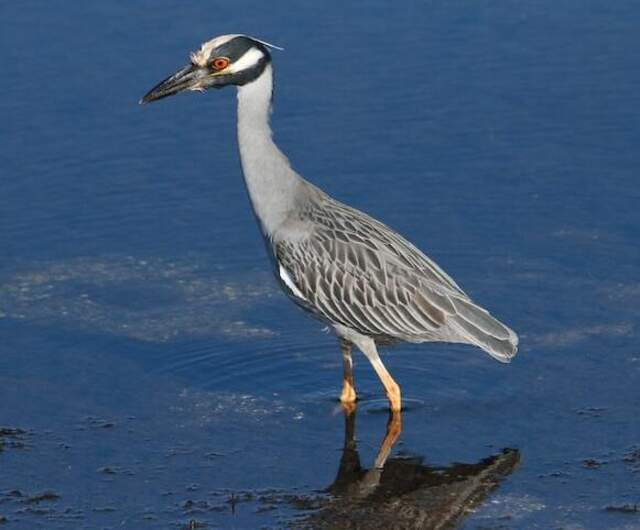
The Yellow-crowned Night Heron is a unique bird, standing out with its distinctive bright yellow crown, black and white striped wings, and red eyes. They are found in the Americas, ranging from the southeastern United States to Argentina. Their preferred habitats include wetlands, swamps, and marshes.
They are carnivores, feeding on fish, crustaceans, and insects.In comparison, Egrets are a group of herons known for their elegant, white-feathered appearance. They are found worldwide, with some species being migratory. Their preferred habitats include wetlands, lakes, and rivers.
Egrets also feed on fish, crustaceans, and insects, but may also consume small mammals and reptiles. They are generally larger than Yellow-crowned Night Herons, with longer legs and a more slender build. Egrets have yellow bills and black legs, while their plumage ranges from pure white to gray-blue.
Great White Pelican
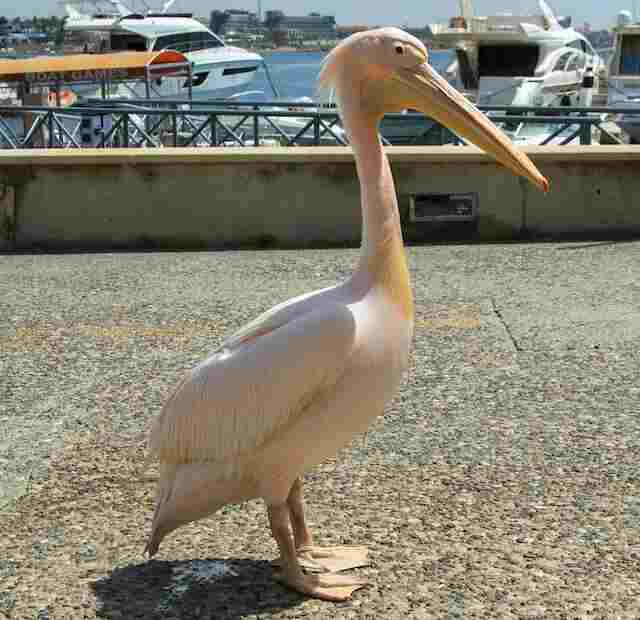
The Great White Pelican is a large bird with a wingspan of up to 3.5 meters. They are found in freshwater and saltwater habitats across Africa, Europe, and Asia. They have a distinctive pink-and-yellow bill and white plumage with black primary feathers. Great White Pelicans are highly social and nest in large colonies.
They feed mainly on fish, but also eat crustaceans and occasionally small mammals. In comparison, the egret is a smaller bird with a slender build and long legs. Egrets are found in wetland habitats around the world, including North and South America, Europe, and Asia.
Their diet consists mainly of fish, but they also eat insects, crustaceans, and small mammals. Egrets have a white or gray plumage, with long plumes on their head and neck during breeding season. While they may also nest in colonies, they are generally less social than Great White Pelicans.
Related Posts:

